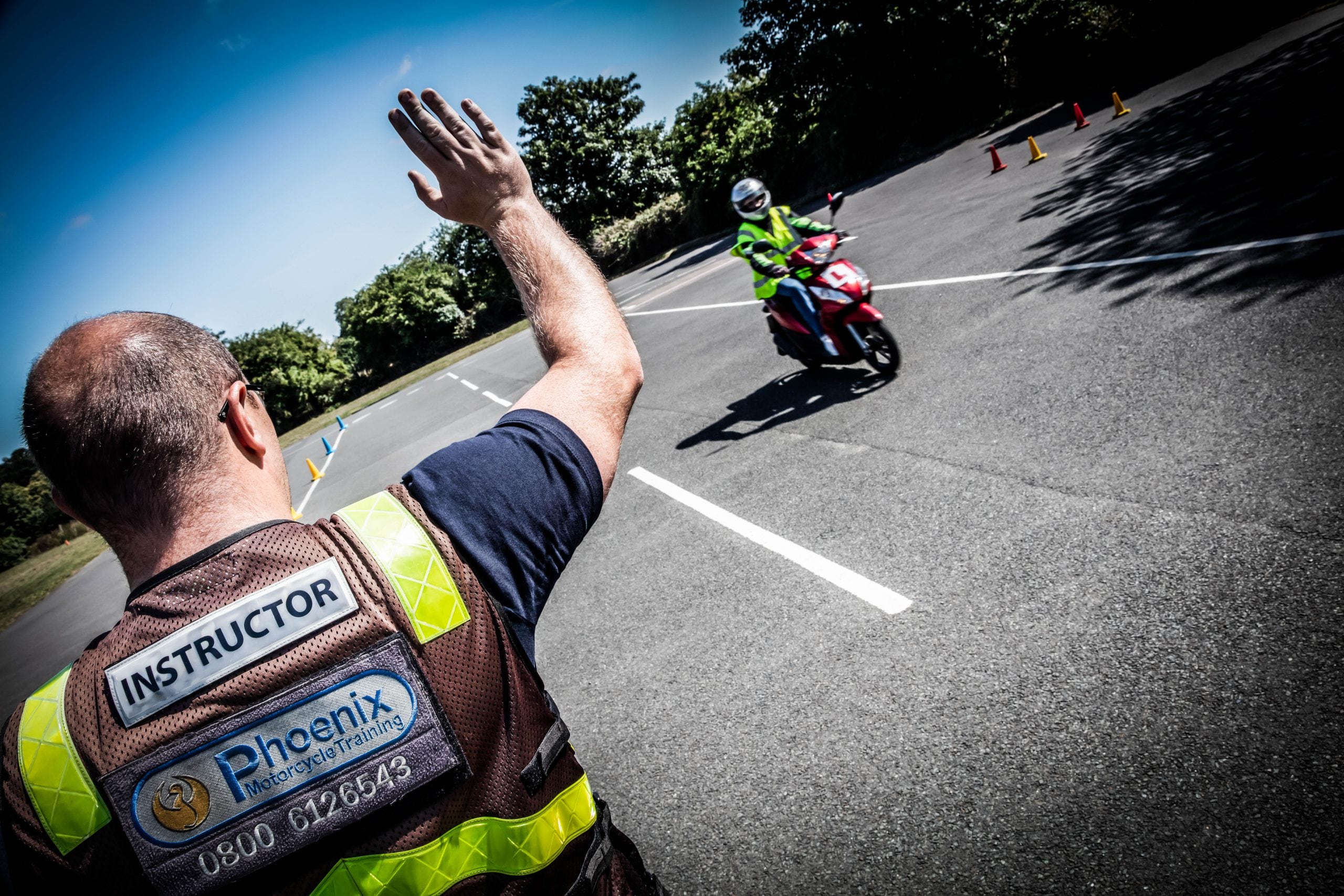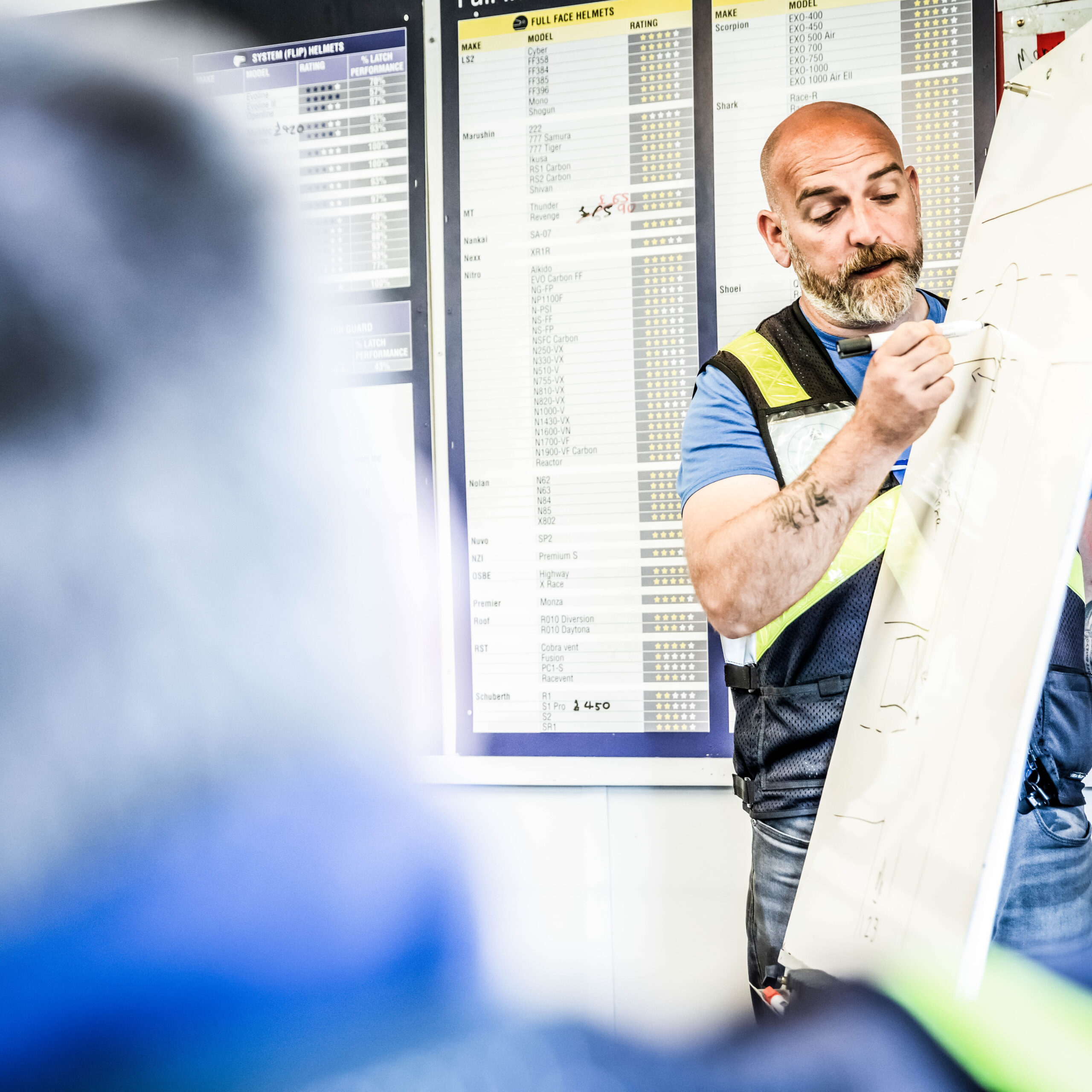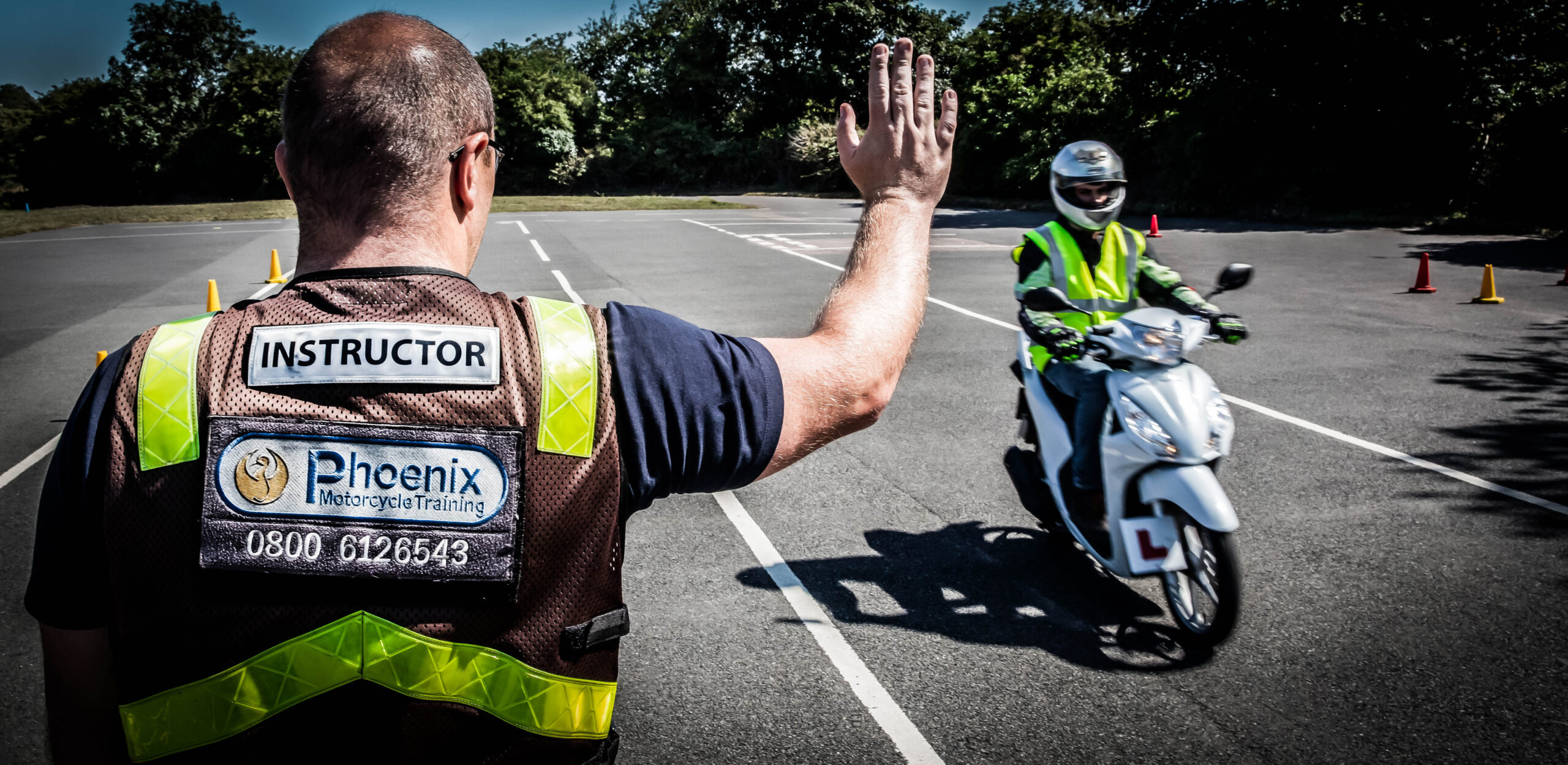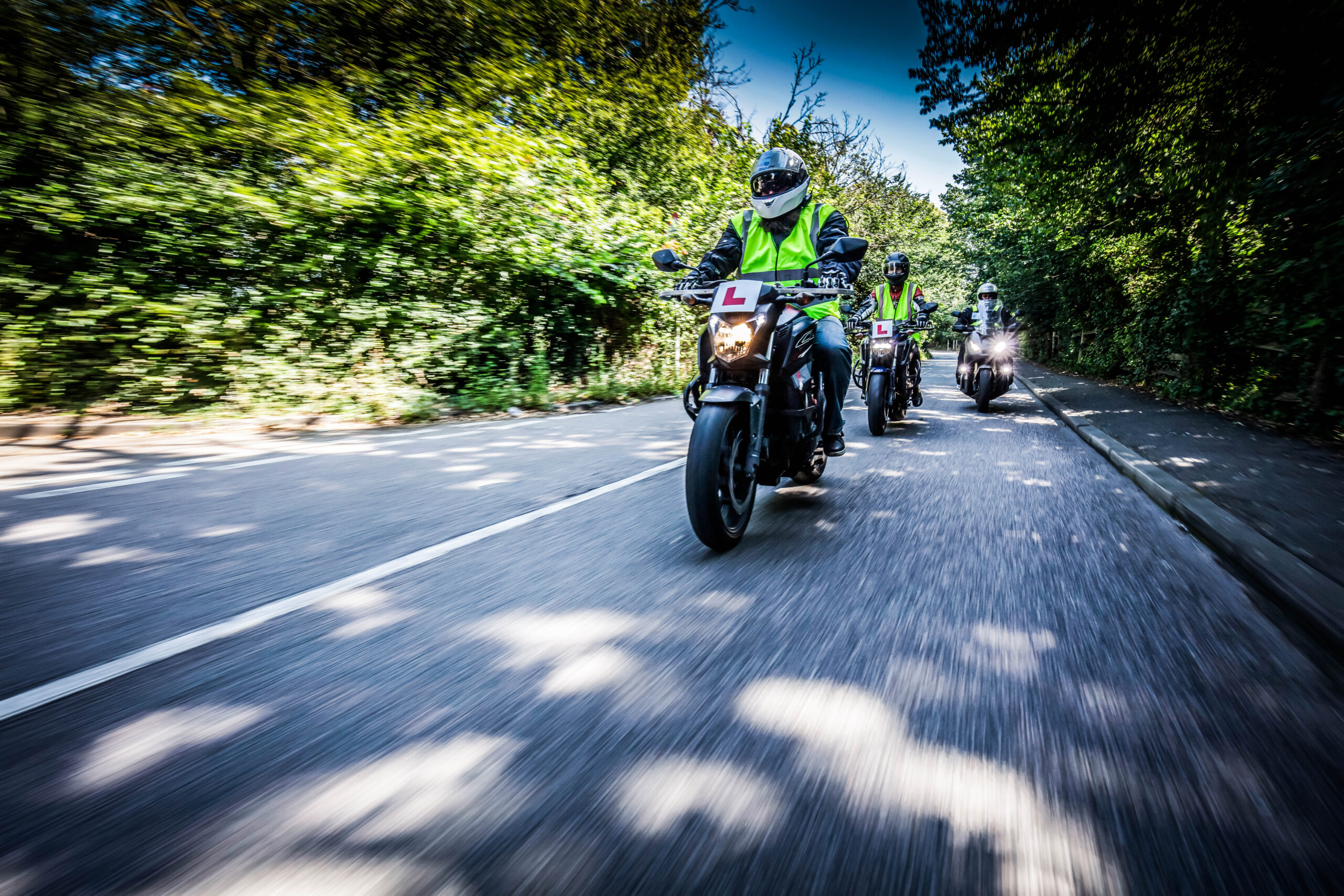
Compulsory Basic Training (CBT)
Your 1st step to a full motorcycle licence
Compulsory Basic Training (CBT) is the first stage for most people in learning to ride a motorbike. Before you can take a Compulsory Basic Training motorcycle course, you’ll need to hold a provisional driving licence or a full driving licence. If you’re 15 years and 9 months or older, you can apply for a provisional licence.
Compulsory Basic Training objectives
The CBT motorcycle course is all about teaching you the skills needed to ride a moped or lower-powered motorbike safely and competently. The focus is on road safety and obtaining a level of competency that you can build upon when riding alone. There is no specific pass or fail test. Certification is carried out by a qualified instructor. This same instructor will be with you throughout your training and will help you to improve your motorcycling skills.
Once your instructor sees you have reached the CBT standard, you’ll be certified with a DL196 and able to continue practising on your own.
How can I get my CBT?
- If you are 15 years and nine months or older you can apply for a provisional licence. This will allow you to take your CBT training as soon as you are 16. 16 is the minimum age for learning to ride a motorcycle on UK roads.
- With a CBT (DL196) certificate, you can legally ride on the UK roads.To ride without an L plate and avoid the need to take a CBT course again in two years’, time you’ll need an A1 licence, or higher, depending on your age.
- From element ‘A’ through to ‘E’ our fully inclusive CBT courses will have you legally riding on UK roads within about a day.

The five steps (A to E)
There are just five steps in the CBT motorcycle course. From element ‘A’ through to ‘E’ our CBT training will have you legally riding on UK roads within about a day.
Part A: An Introduction to the CBT
The beginning of your CBT motorcycle course will take you through the basics – what the purpose of the course is and what the content covers. Your trainer uses examples to illustrate their points. They’ll also check your licence along with your eyesight. At the end of this part, you’ll understand the content and purpose of CBT training, how to select the right equipment for riding a motorcycle or moped, and the costs involved.

CBT certification is required for nearly all riders in the UK
Once you have your DL 196 certificate, you can go on to obtain a full motorcycle licence to ride without L plates and take a pillion passenger.
Part B: Practical On-Site Training
This is your introduction to the motorcycle. You’ll get a feel for the weight and balance of a motorbike and be able to show your knowledge of how the motorcycle works at the end of this element. You won’t start riding until the next part, but you will be able to perform basic safety checks, understand the motorcycle’s controls, be able to start and stop the engine, be able to wheel the motorcycle and brake the bike to a standstill. You will learn these skills along with a maximum of three other students.
Part C: Practical On-Site Riding
Now you’ve covered the very basics, you can begin riding the motorcycle. Your motorcycle trainer will take you through some core skills. You’ll get to practice them until they’re happy you’re safe to be taken out on public roads. These skills and techniques include rear observation, the OSM routine (observation – signal – manoeuvre), and PSL routine (position – speed – look).
All these skills enable you to control the motorcycle safely when riding it. You’ll cover riding in a straight line, riding slowly, figure of eight riding, U-turns, braking, changing gears, emergency stopping, rear observation, and turning left and right. No more than three other students will accompany you on this part of the Compulsory Basic Training course.
Part D: On-Road Training
Once you have completed the off-road theory and practical training, you’ll need to be prepared for the on-road element. Your group may need to be split at this point. It is a legal requirement that a trainer manages no more than two students for all on-road parts of CBT motorcycle training. Part D of the on-road training is purely theoretical, and your trainer will take you through all the information and theory needed to understand how to legally and safely ride on the road. These are the foundations of motorcycle riding and cover essential points such as:
- Legal requirements for riding on the road
- Being visible to other road users
- The vulnerability of motorcyclists
- Highway Code
- Speed
- Road positioning
- Distances to maintain between you and other vehicles
- Rear observation
- Anticipating hazards and other drivers’ behaviour
- Road surfaces
- Weather conditions
- Hazard perception
- Rider attitude
- Drugs and alcohol
Part E: Practical On-Road Riding
This is the final element of the CBT motorcycle course, throughout which your trainer will assess if you are ready to ride on the road on your own. If they believe this to be the case, they will then issue you with a CBT certificate (DL196).
You’ll ride on the road with your trainer (and possibly one other student) for a minimum of two hours and be in radio contact with your trainer throughout this time. You will need to demonstrate that you are able to cope with a variety of traffic conditions in a safe manner. Your trainer will request you to stop and discuss various aspects of your riding. They’ll also explain how you can put into practice the theory from earlier in your training. The Compulsory Basic Training certificate (DL196) will only be signed when your trainer is confident you are safe to continue learning to ride on your own.
To ride without L plates and avoid the need to take a CBT course again in two years’ time to continue riding on the road, you will need an AM licence, or higher depending on your age.
After getting your CBT
Once you complete your CBT, you’ll receive a certificate (DL196). This proves you have successfully completed the motorcycle training course.
If you wish to ride without L plates, carry a pillion passenger, ride on the motorway or avoid the need to retake the CBT every two years, you’ll need to obtain a full licence, which includes a theory and practical test.
FAQs
In some cases, CBT courses are not required for some riders. These circumstances include people who only want to ride a moped (up to 50cc) and passed their car driving test before 1 February 2001.
People who want to ride a motorcycle and have a full moped licence from passing a moped test after 1 December 1990, those who have a full motorcycle licence for one category and want to upgrade to another.
Some people who live and ride on some of the UK’s offshore islands will also be exempt from taking a CBT course. Full details of these offshore islands are available on the gov.uk website.
Hazard perception tests are not hard, but they do require an understanding of what potential and developing hazards are. They also require you to concentrate on the road in a similar way to how you would if you were actually riding a motorcycle.
Try to stay calm through the clips and watch the road for how other vehicles are behaving. Where other vehicles are positioned on the road, whether you would need to slow down or move your position to reduce your risk as a rider, and whether or not vehicles are indicating to turn or coming to an intersection are some of the things you should be looking out for.
These manoeuvres will need to be demonstrated off-road for those wishing to obtain an AM, A1, A2 or A (full) motorcycle licence. The power of the motorcycle will vary depending on the level of motorcycle licence you are testing for.
The earlier you identify developing hazards, the higher your score will be for the clip.
You will only get one chance at each clip, so please pay attention. If you fail the hazard perception test, you will need to re-sit the entire theory/hazard perception test again.
Hazard perception tests are taken on a computer.
You will be shown a series of 14 clips, each has a developing hazard and at least one clip will have two developing hazards. You will be asked to click a mouse each time you see a potential risk ahead and a red flag will appear at the bottom of the screen to show your click has been recorded.
You will not be penalised for identifying additional hazards, but you will receive a zero score for a clip if you click everything or click in a pattern that indicates you are not identifying hazards correctly.
Taking a theory test is a requirement for all motorcycle licence types.
Each theory test includes a hazard perception test.
This test is to see how well you can perceive the development of potential hazards when riding on the road. Being able to recognise hazards is an essential element of motorcycle safety as it enables you to take the necessary actions to avoid danger, such as slowing down or changing position.
This clip gives an example of a hazard perception test.
CBT courses vary in price between schools but is around £170 for the day. If you need to re attend to complete additional training, the cost will be discussed by the office, depending on the recommendation of the instructor.
A Phoenix Motorcycle Training CBT includes everything you need to take the CBT course. We would advise your bring lunch and sturdy boots or shoes and you MUST provide your provisional or driving licence required by the DVLA.
Everyone is different and training times for CBT courses vary.
You can usually expect a CBT course to last for at least a day and certification can be achieved in this time.
Your instructor will keep you informed about your progress throughout the day and help you improve in any areas that may be needed to reach the certification level.


